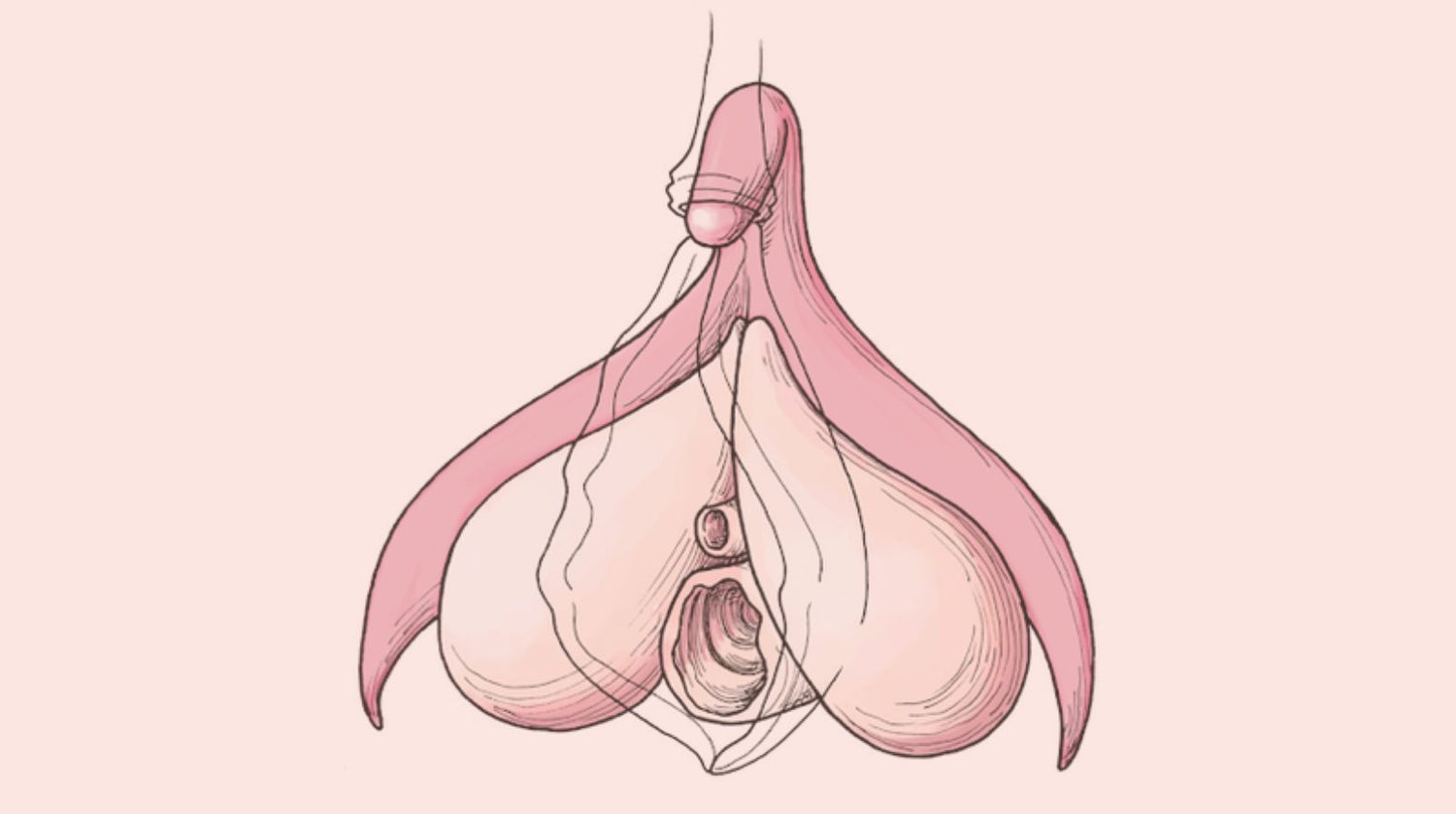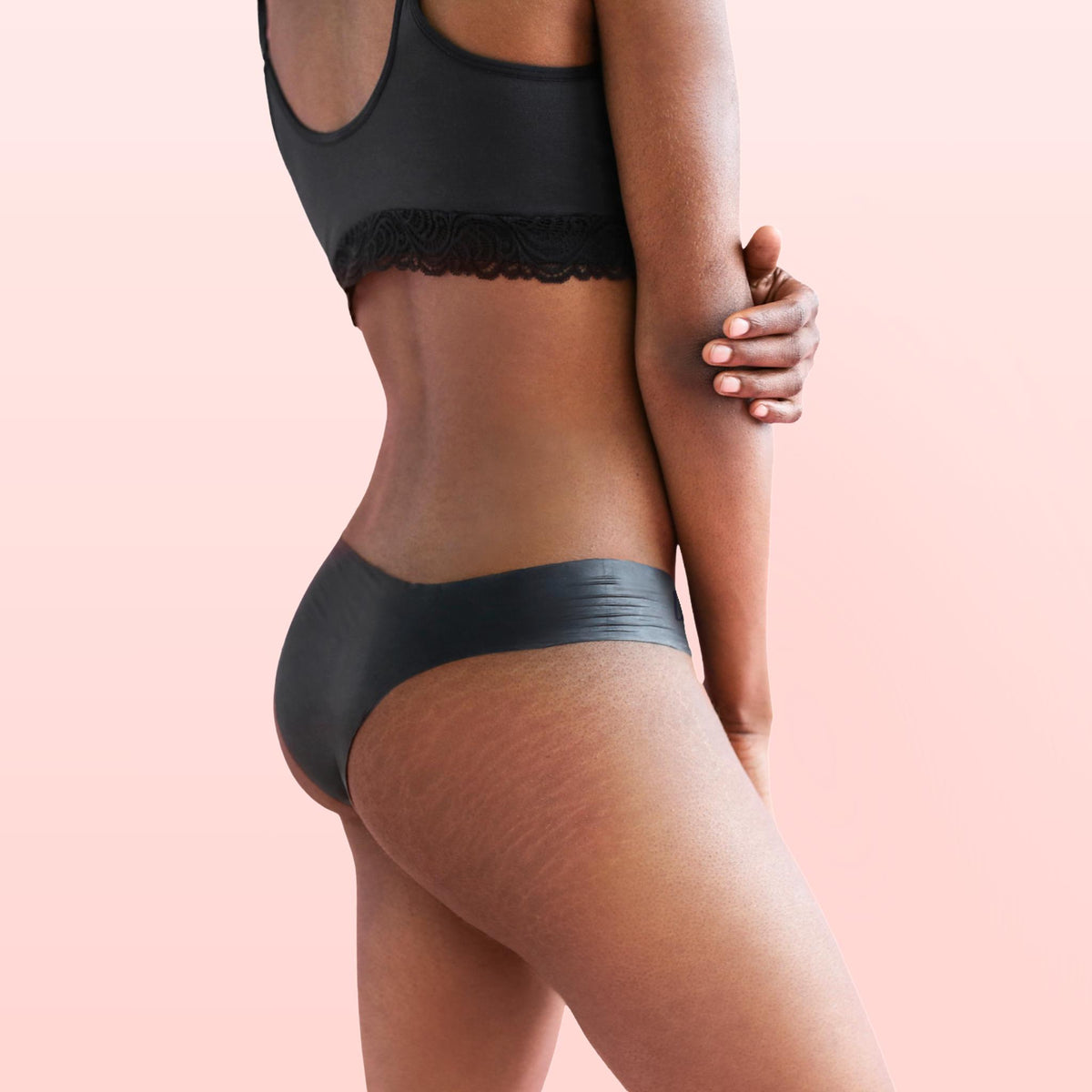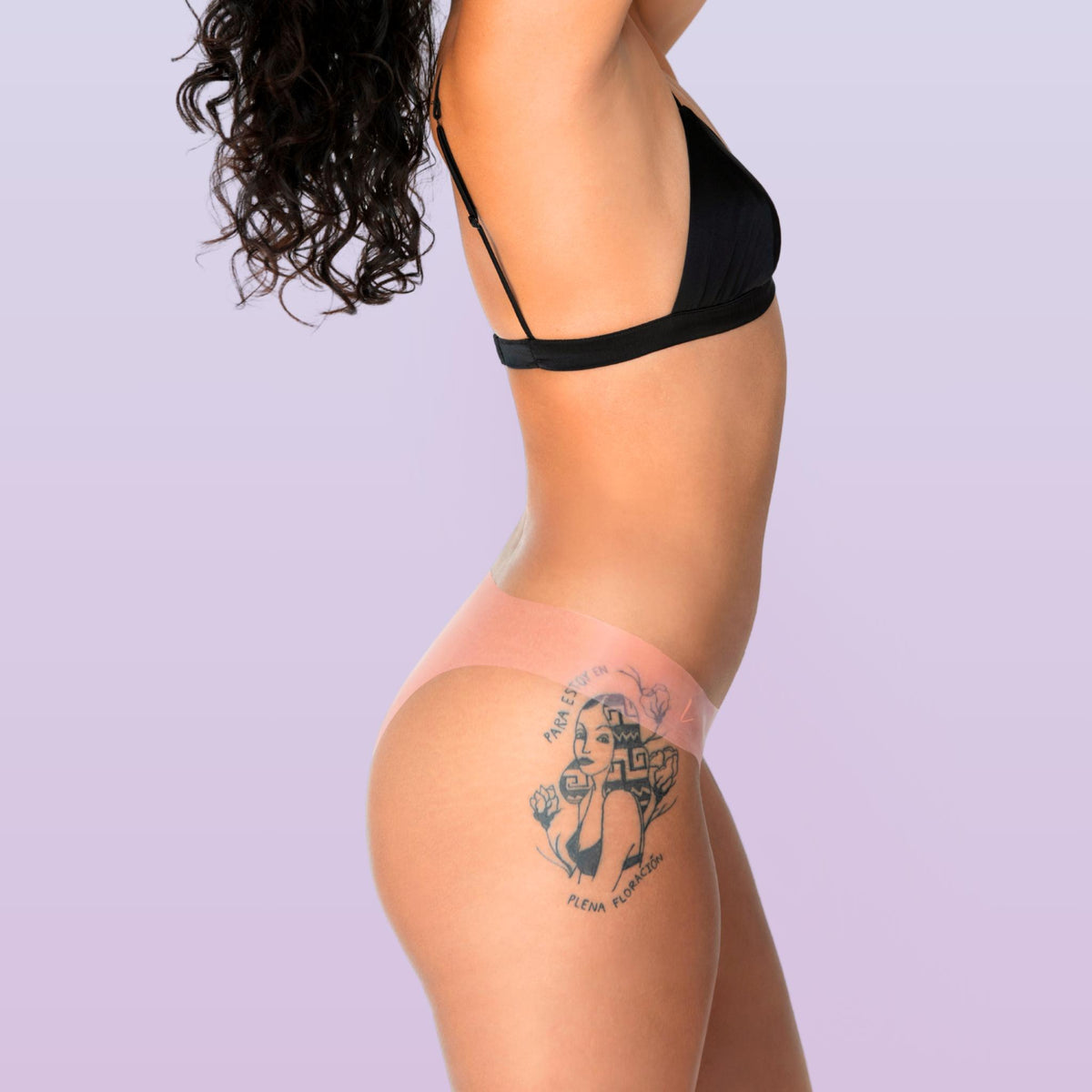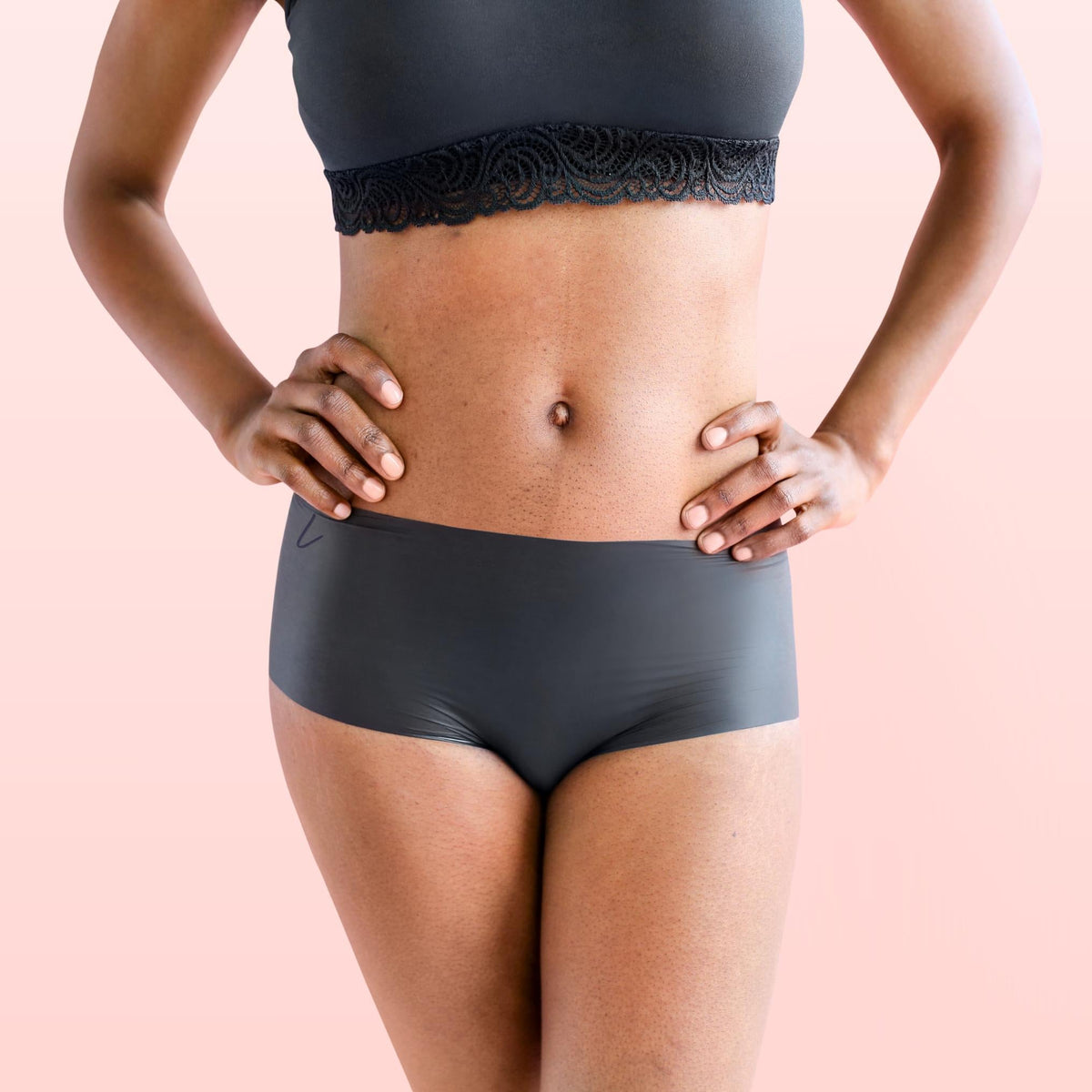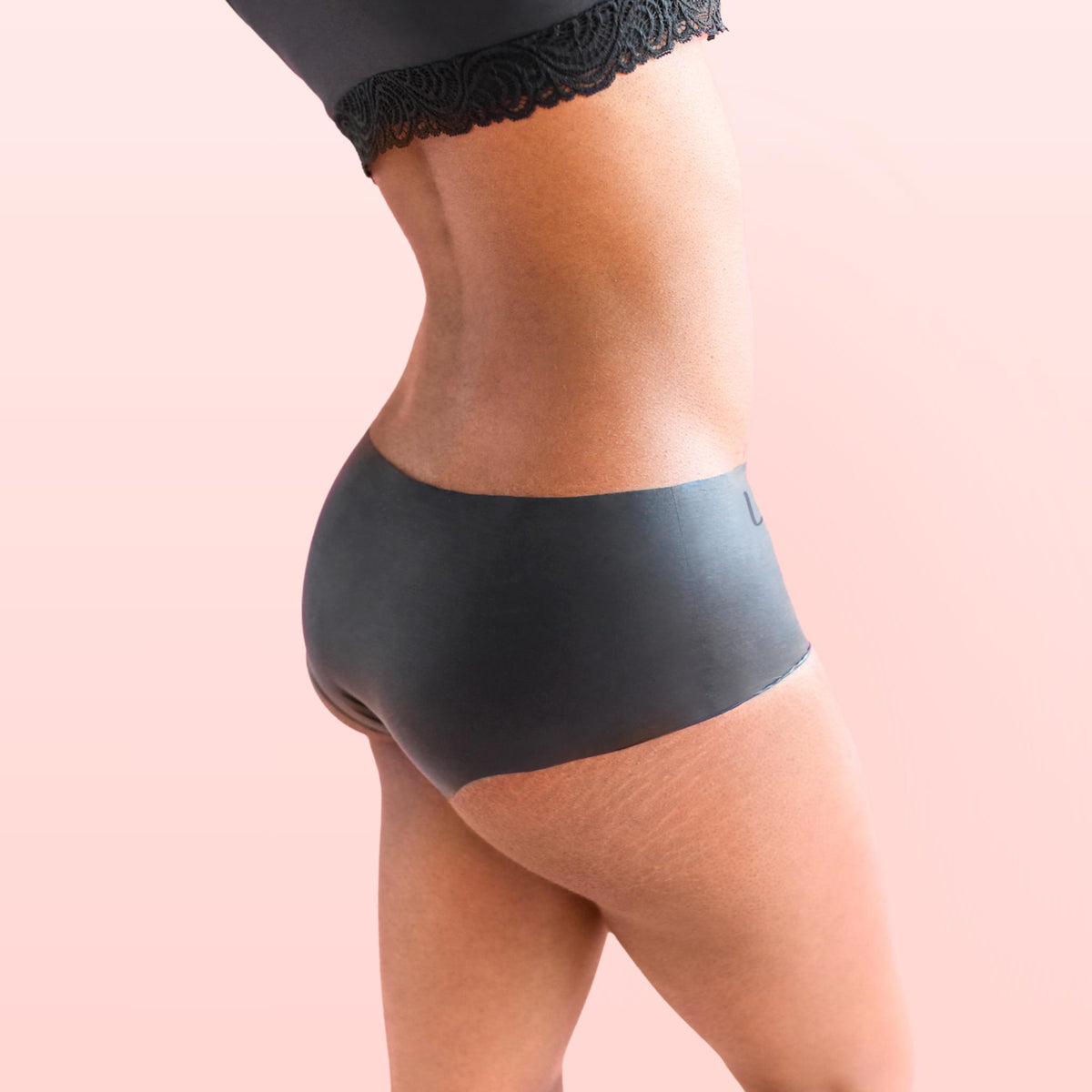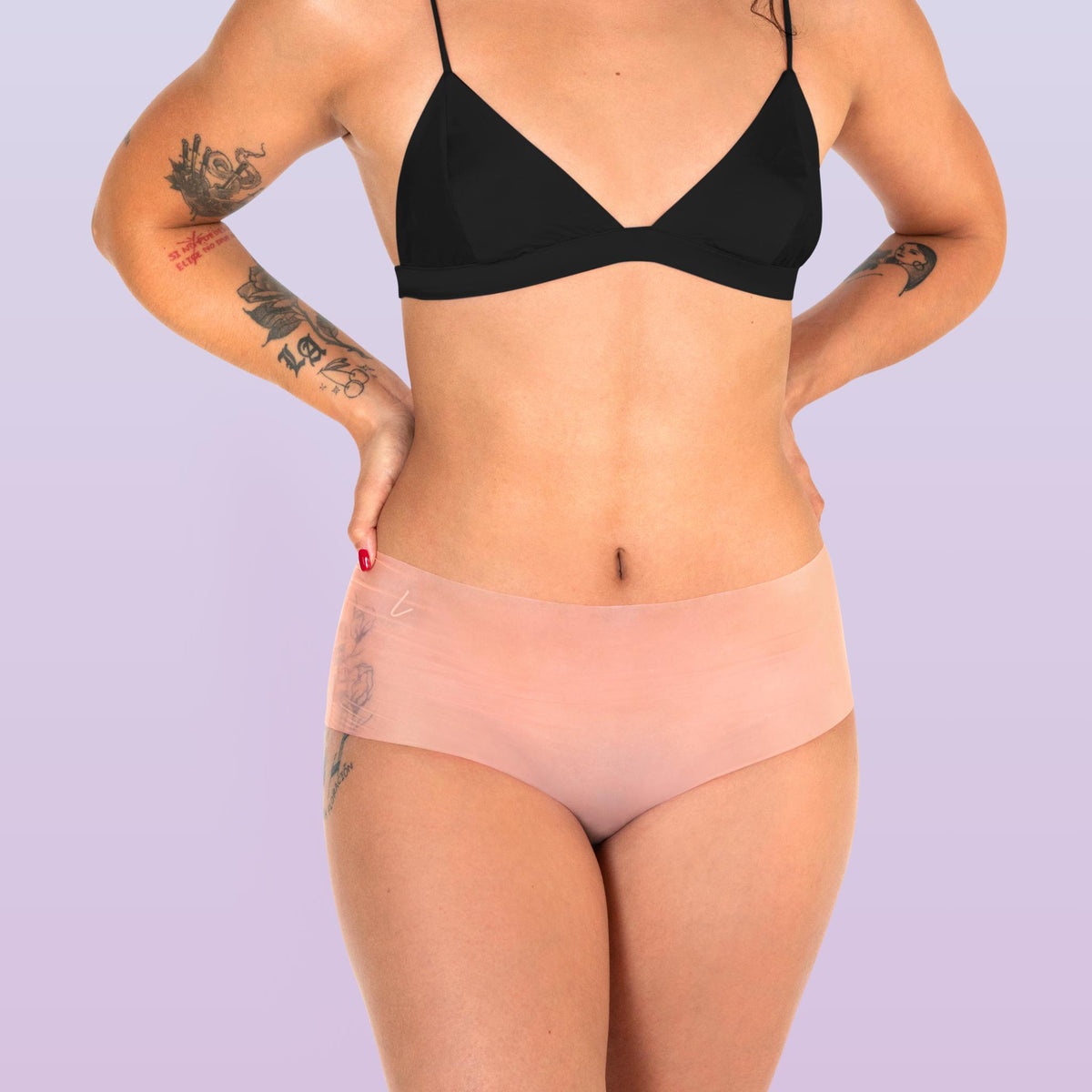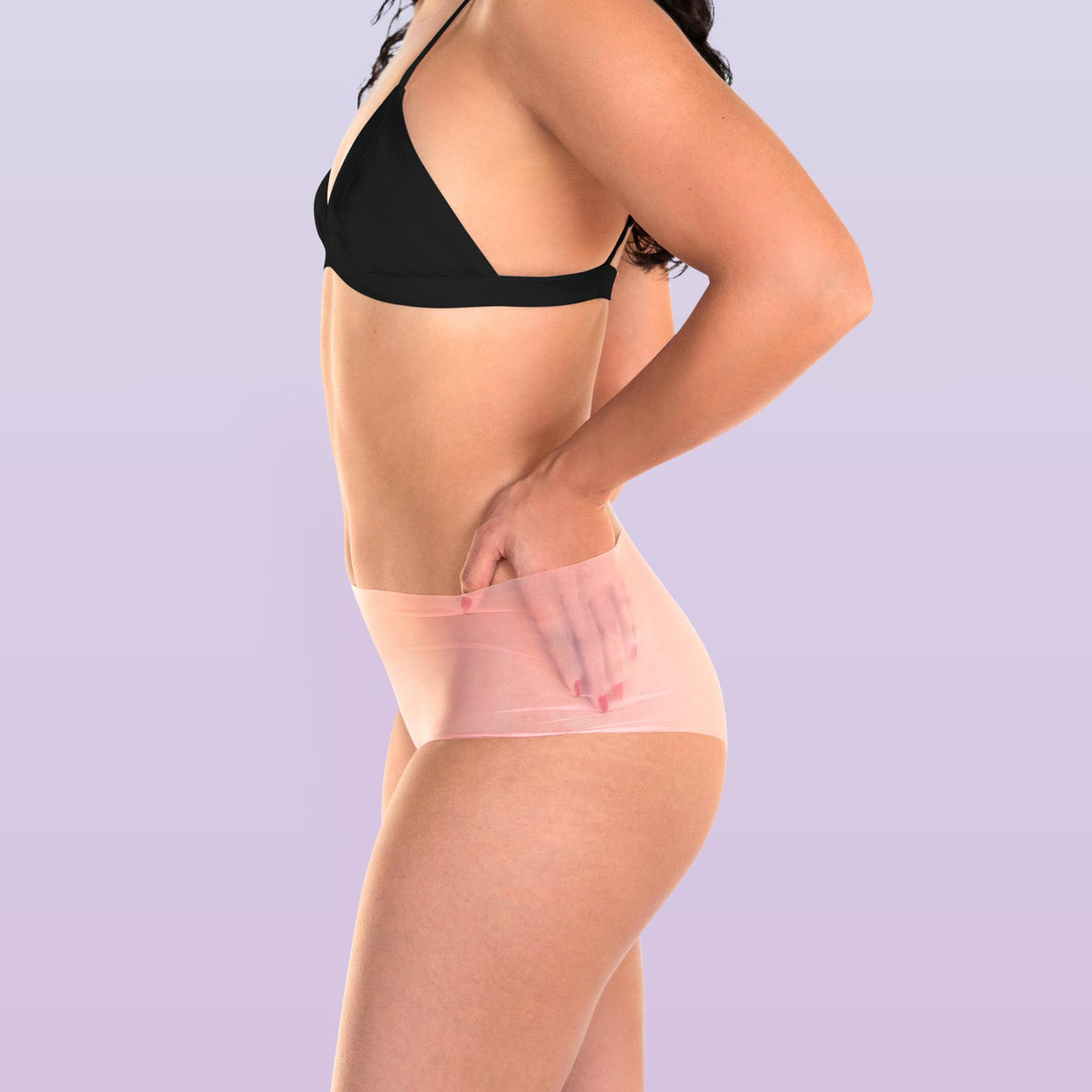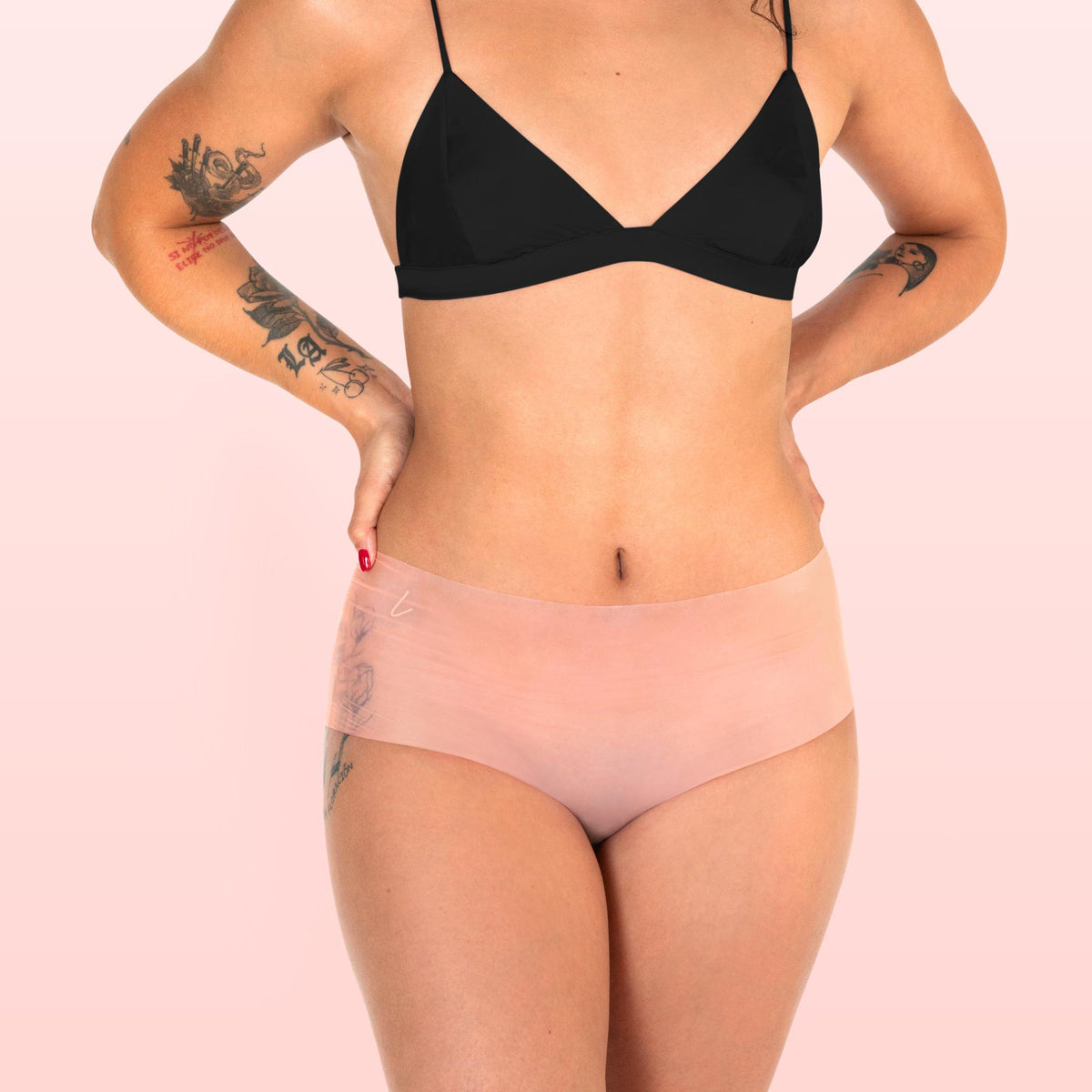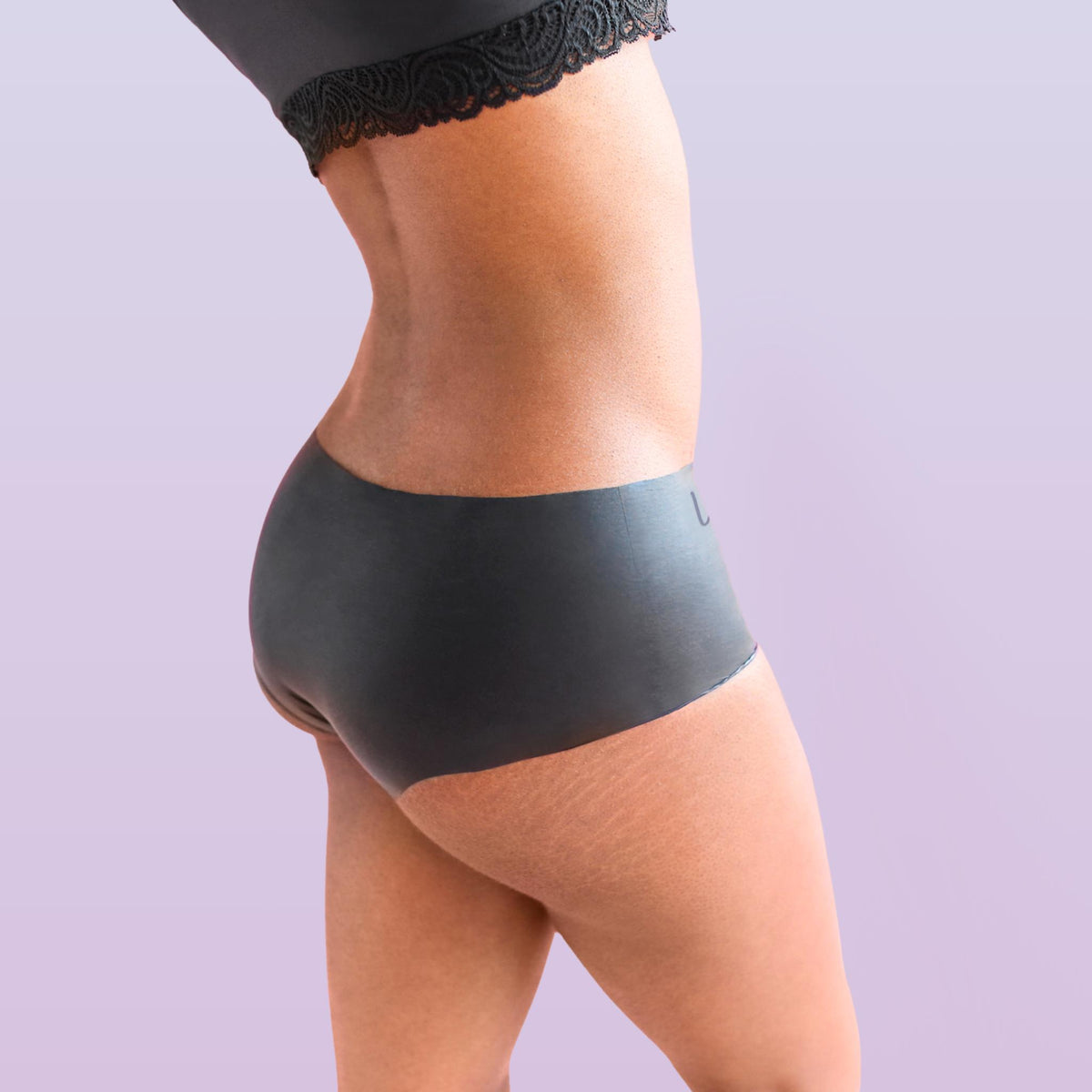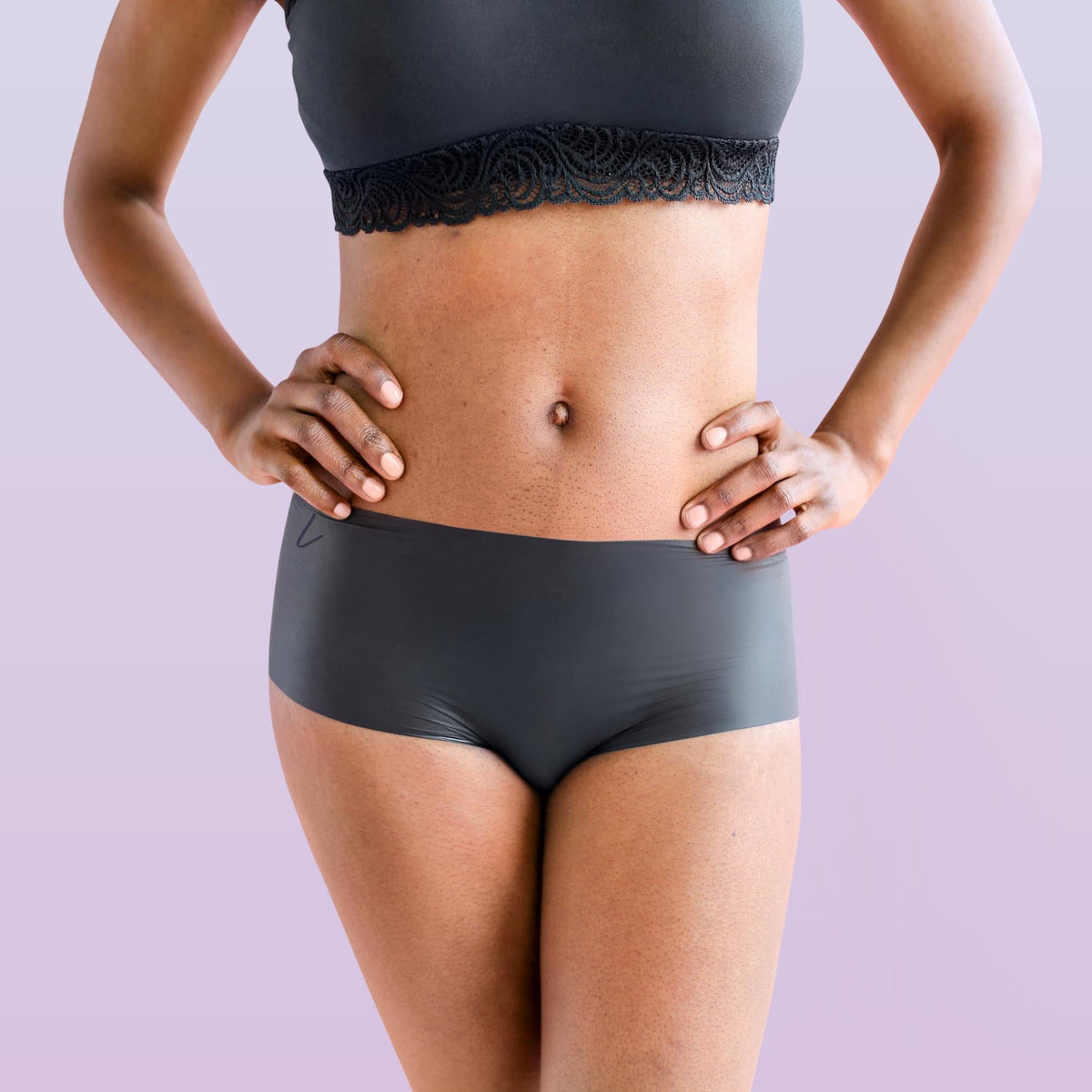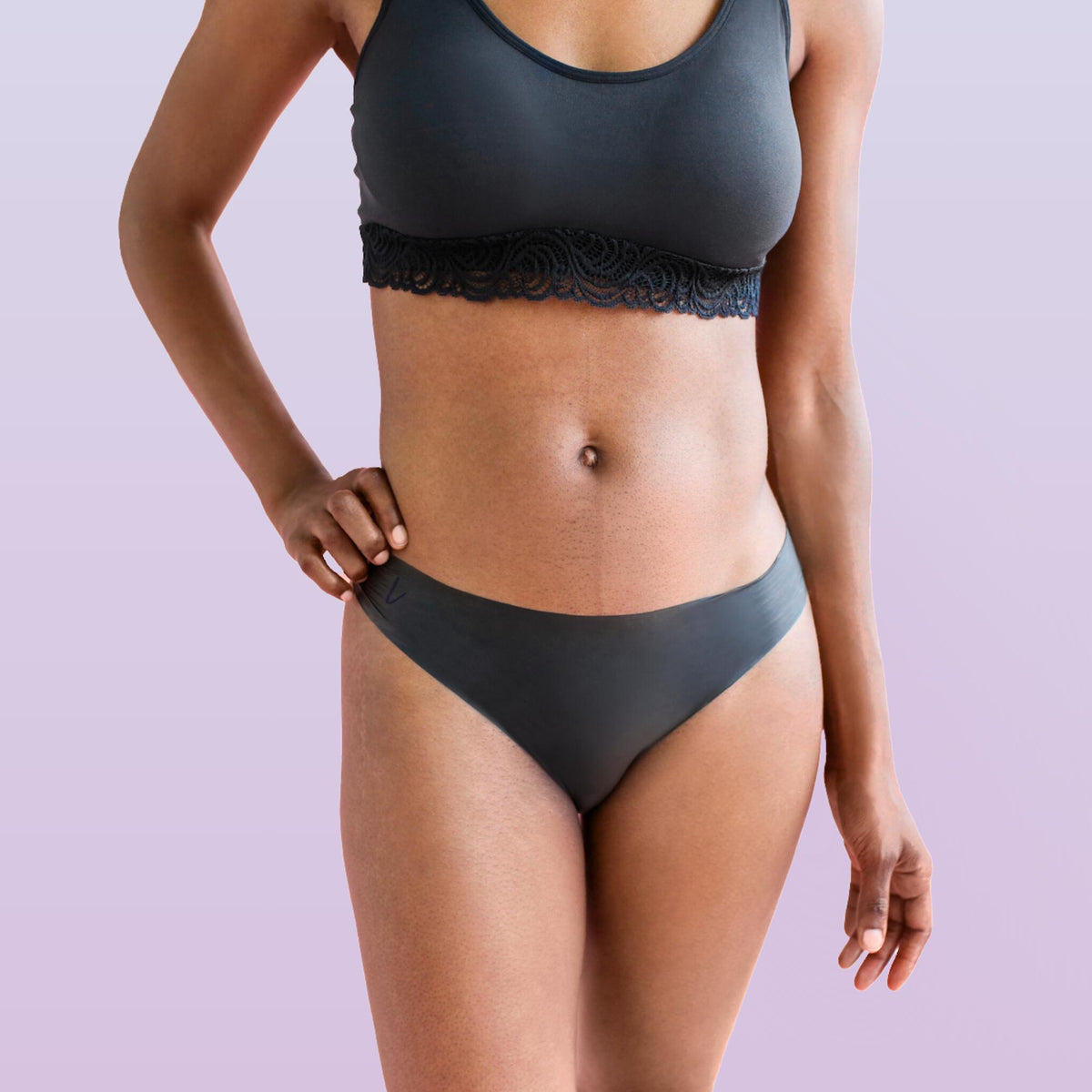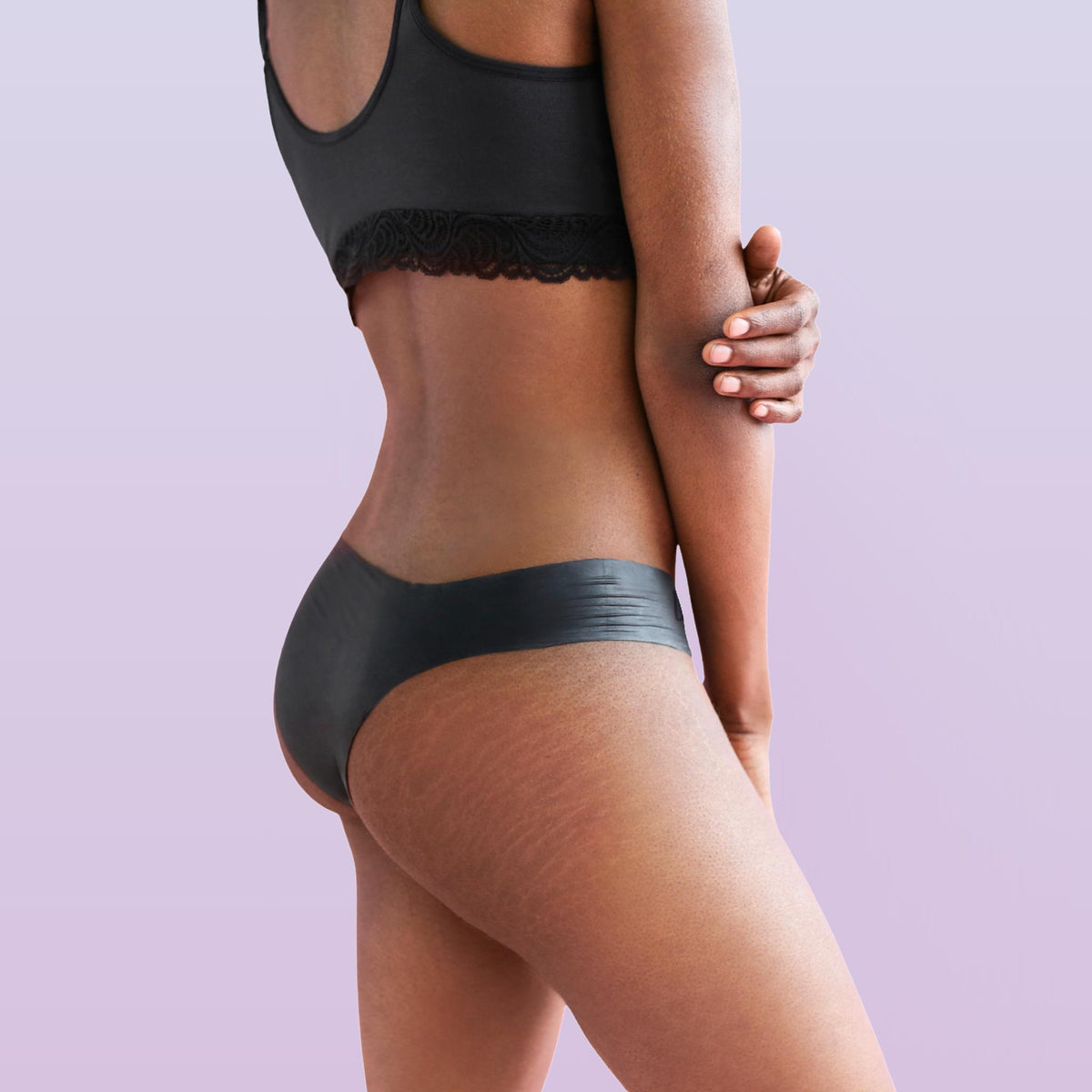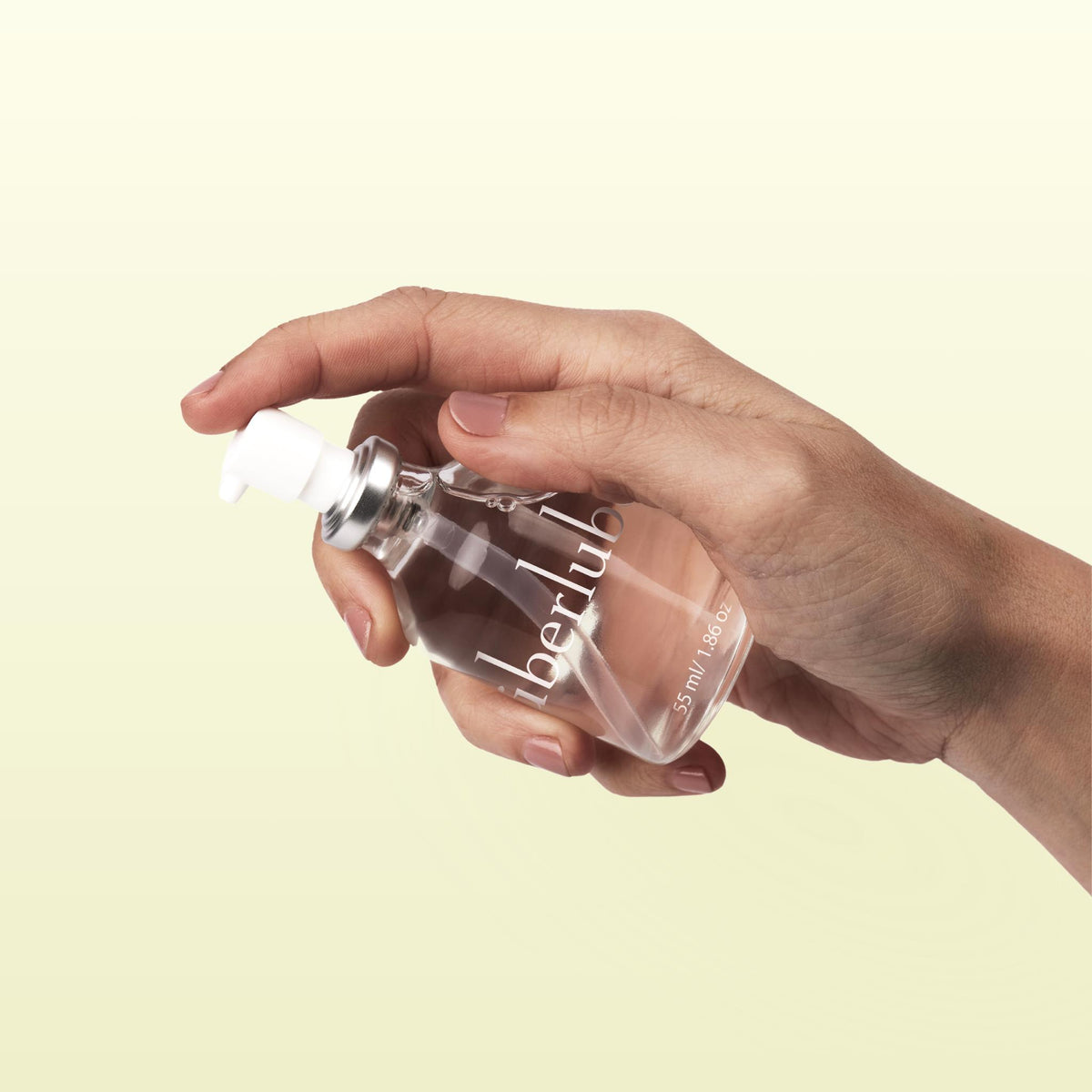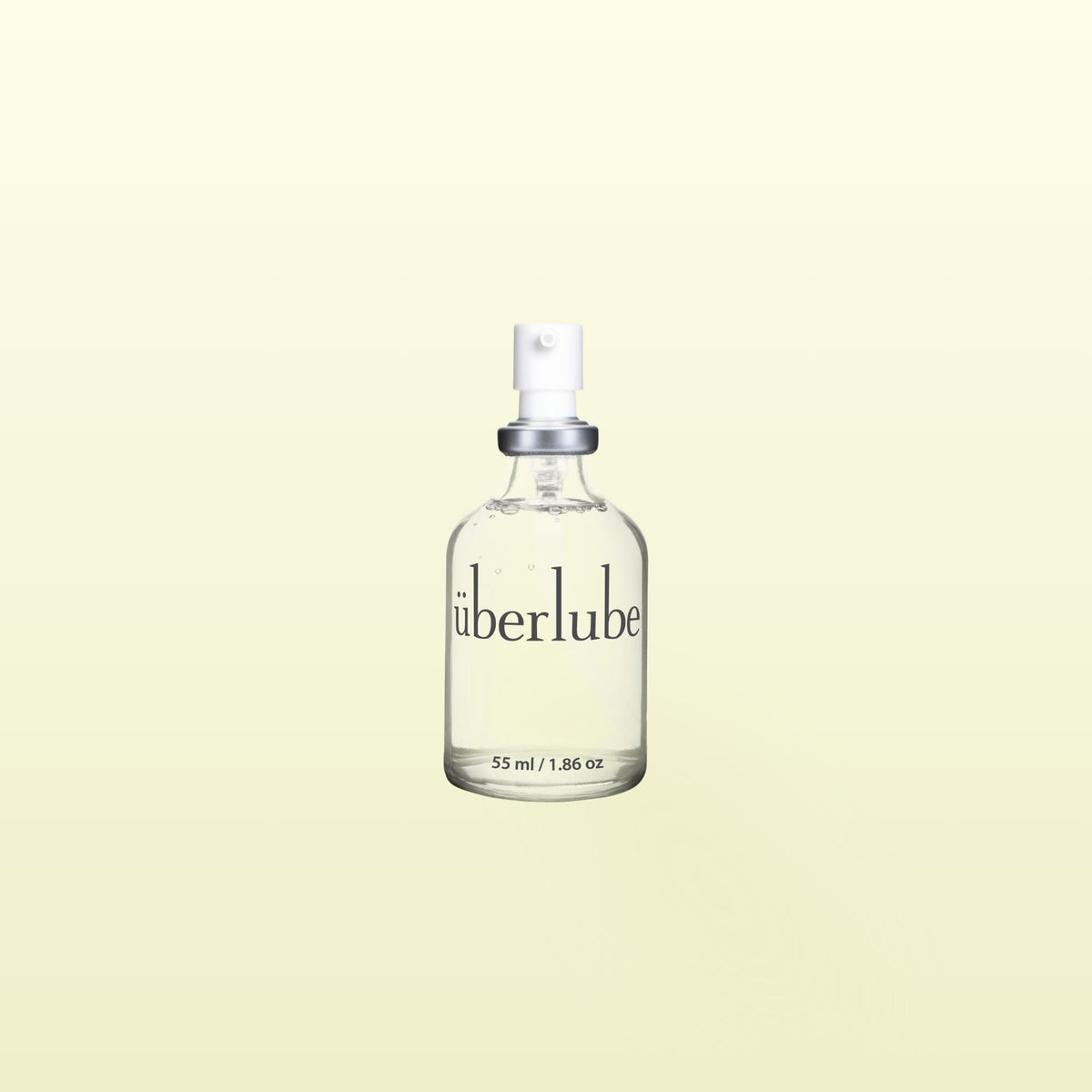The clitoris is the pleasure center of the vulva. While it has no role in reproduction, it's a major player in sexual stimulation and reaching orgasm.
You might be familiar with the tip or “nub” of the clitoris (the glans clitoris), which is the only visible part of this wishbone-shaped organ. You might even call it "the clit"...but really it's just the beginning! The rest of the clitoris is internal, below the surface of the vulva; it can actually be up to five inches long. During early fetal development, the penis and the clitoris are similar in structure, and differences between the two only start to form between weeks 8–9 of gestation.
Vulva Anatomy
Here's quick anatomy lesson before we dig in, since there can be a lot of confusion between the vulva and the vagina. “Vulva” is an umbrella term for all external female genitalia (including the clitoris), whereas the “vagina” is the passage inside your body that extends up from the vulva.

While every person is different, and not all vulvas look the same, the vulva is made up of the following:
- Labia majora: The labia majora (or outer lips of the vulva) are the folds of skin that surround the vaginal opening. The labia majora are typically fleshy and covered in pubic hair.
- Labia minora: The labia minora (or inner lips of the vulva) are located between the labia majora; the labia minora begin at the clitoral hood and end below the vaginal opening.
- Clitoris: The tip of the clitoris (remember, it’s more than meets the eye!) is located at the top of the vulva, where the labia minora meet.
- Vulva vestibule: The vulva vestibule is the area between the labia minora, it contains the vaginal and urethral openings.
- Glands of Bartholin: The Bartholin’s glands or greater vestibular glands (there are two; one on each side of the vaginal opening) play an essential role in the reproductive system. These pea-sized glands are involved in mucus production and help keep the vagina lubricated.
Clitoris Anatomy
Like the vulva, everyone’s clitoris is unique. For example, some people have parts of their clitoris that are easily visible and accessible, while others may find that their clitoris is more hidden underneath their clitorial hood.
The tip of the clitoris (glans clitoris) also varies in size — it can be tiny, like the size of a pea, or larger, like the size of your thumb.
When aroused, the clitoris swells up and becomes stiff (similar to a penis). This is because, just like in men, when a woman becomes aroused, blood flows to the genitals and can increase sensitivity and lubrication.

The clitoris contains both external and internal structures, including:
- Glans clitoris: The glans clitoris is what most people call the clitoris. The full structure of the clitoris goes way deeper than that little nub above the urethral opening – the glans clitoris is just the tip!
- Clitoral hood: The labia minora meet at the top of the vulva forming a “hood” for your glans. This is called the clitoral hood. It can cover all, some, or none of your glans clitoris.
- Body (corpora): The body of the clitoris is located behind the glans clitoris. The body extends and branches off to form what look like a pair of legs or the crura. (Picture a wishbone!) The clitoral body is covered by the tunica albuginea, a fibrous connective tissue.
- Crura: The crura, mentioned above, are two little legs that extend from the corpora or clitoral body. They’re the longest part of the clitoris. These legs surround the vaginal canal and urethra. Like the vestibule bulbs, the crura also contains erectile tissue that swells during arousal.
- Root: The root is where the nerves come together (or where the legs of the crura meet). This area is extremely sensitive.
- Vestibular bulbs: The bulbs of vestibule or vestibular bulbs are a part of the clitoris and are formed from erectile tissue (yep similar to the erectile tissue in the penis). These bulbs start near the clitoris and extend toward the urethra and vagina. The two bulbs then split and surround the urethral and vaginal openings. (In other words, they’re located on either side of the vagina.)
Where is the Clitoris Located?
The clitoris is located above the vaginal opening where the labia majora meet. It’s attached to the labia, the pubic symphysis (a joint between the left and right pelvic bone), and the mons pubis (a round area of fatty tissue) via ligaments. This structure keeps the clitoris in a bent position.

How to Find the Clitoris
Finding the clitoris may seem tricky at first, but once you’ve got it – you’ve got it! You can find the clitoris by tracing the labia minora to the spot where the lips meet (the clitoral hood). This is where the tip of the clitoris is!

Remember: Everyone is different. While some people have a fully exposed glans clitoris, others may be covered by their clitoral hood. Clitorises are like fingerprints – everyone has one that’s only theirs and is totally unique.
The Clitoris Can Be Very Sensitive
Remember, the clitoris has more than 11,000 nerve endings, according to 2022 research, so it can be extremely sensitive.
“The glans clitoris has a ton of sensitive nerve endings that can feel amazing when stimulated,” says Kate Williams, the co-founder of the sex-positive and sexual wellness website Pleasure Better. “Or, if you’re not turned on, it can feel uncomfortable or even painful!”
Lorals latex undies are made with ultra-thin latex — that’s as thin or thinner than a condom. So, if direct stimulation is uncomfortable or painful, Lorals may be able to help.
Our Lorals undies for oral offer a barrier between your glans clitoris and your fingers, toy, partner (or all three!). Plus, they’re ultra-thin, so you can feel everything without it being too intense. Just put a bit of lube inside and outside your Lorals and see what feels right for you.
How to Stimulate the Clitoris
Every body is different, especially when it comes to pleasure. Whether you’re new to clitoral stimulation or a seasoned pro looking to brush up on your skills, here are a few things you can try:
- Cut out the noise. Touching your clitoris when you’re not turned on or in the right mindset can feel uncomfortable or even painful. Before you get down to business, take yourself on a mental trip. Cut out the noise (e.g., turn off the TV or turn on some porn) and ensure you’re comfortable. Yes, this may be a challenge if you have roommates or children, but you deserve a good orgasm, and your body will thank you for the extra care.
- Don’t focus on the endgame. “Feeling pressure to orgasm can be one of the biggest turn-offs and detracts from feeling pleasure,” says Williams. Instead, just focus on enjoying what feels good. Pleasure should be the goal — not orgasm.”
- Explore your body. Maybe your happy place is the shower. If so, Rebecca E. Blanton, Ph.D. (aka Auntie Vice), and BDSM performer recommends getting familiar with your body by gently touching yourself and letting the water wash over you. “Start at your belly and slowly run your hands over your belly and pubis. Use one or two fingers and run them up and down over the clitoris,” adds Blanton. “Alternate by circling the clitoris without directly stimulating it.” Doing this is a good start for people who are uncomfortable masturbating. “This does not need to be sexual; just get used to touching yourself,” says Blanton.

- Experiment with direct and indirect stimulation. “Some people enjoy their clit (glans clitoris) being directly stimulated while others prefer indirect stimulation,” says Williams. “Try gently stroking the glans clitoris or spreading your fingers around your clit and moving the entire area, so your lips and clitoral hood indirectly stimulate your clitoris.” You can also use your fingers to tap on your clitorial hood lightly. This will move the clitoral shaft back and forth, indirectly stimulating your clitoris.
- Consider using a toy. Bring a toy into the mix if using your hand isn’t doing it for you or you get bored quickly. “Invest in a good wand-style vibrator with multiple settings,” recommends Blanton. “Put lube on the head of the vibrator and apply pressure to the external labia around the clit. If you want more pressure or vibrations, open your labia and apply the wand to your clit.”
- Have fun! If you’re not enjoying yourself, what are you doing? Be sure to let your guard down so you can have a good time. If this is difficult for you, whether your reason is due to sexual trauma, PTSD, anticipatory pain, or another personal experience, patience is key.
Important Takeaways
Every person is different – there’s no “right” size.
Clitorises are like snowflakes and come in many shapes and sizes. Your glans clitoris may be visible, or it may be hiding under your clitoral hood. It may be the size of a pea, or it may be the size of your thumb. It may be pink or brownish-black.

All of these variations are entirely normal and nothing to stress over.
That “nub” is just the tip of the iceberg.
The clitoris is so much more than meets the eye. That little “nub” or “hill” you see is just the tip of the iceberg. The shaft of the internal clitoris can extend to five inches long.

Many men and women cannot identify the clitoris.
In 2019, YouGov research revealed that a number of people are uninformed regarding female genitalia. The study was survey-based and conducted in the UK; researchers asked 2,000 adults to label a diagram of the clitoris, urethra, labia, and vagina.
The results showed that six in 10 men (59%) and nearly half of the women surveyed (45%) could not label the vagina. One-third of men and women didn’t know where the clitoris was located (31% and 29%, respectively).

“Because the clitoris is so rarely talked about, sex has been extremely one-sided for years,” says Williams. “Growing up in a sexually conservative culture, I was several years into adulthood before I ever learned what my clit was. If I hadn’t been explorative myself or my partners hadn’t been explorative and patient — I may have never learned to enjoy pleasure,” Williams continues.
Orgasms aren’t the only thing at stake.
It’s 2022, and “specialists” are still getting it wrong. Why? Because no one wants to talk about the clitoris.
In a telling article published in The New York Times, writer Rachel E. Gross shares the stories of women who lost all feeling in their clitorises due to the negligence of misinformed healthcare providers.
According to urologists Dr. Irwin Goldstein and Dr. Rachel Rubin (also known as Washington’s “clitorologist”), most medical providers “neither know how to examine nor feel comfortable examining the clitoris.”

This lack of knowledge has the potential to harm anyone with a vulva. There have been documented (and preventable) injuries to the clitoris in many procedures, including episiotomies during childbirth, pelvic mesh surgeries, and hip surgeries.
“It’s not just this strange, mythical area that’s supposed to give you orgasms,” Dr. Rubin told Gross. “You should know what is what and where things are coming from.”
The Bottom Line
The clitoris is the pleasure center of the body. It’s sensitive to all types of touch, and what works for one person may not work for another. Experimenting can help you and your partner familiarize yourselves with what sensations feel best (e.g., stimulating the clit with a tongue, a toy, fingers, your partner’s genitals, or a sex toy).
Understanding where the clitoris is, and its anatomy as a whole isn’t just important for those who want to get off — everyone benefits from learning more about the female anatomy, including medical professionals.
Written by Tabitha Britt, a freelance writer and editor. She's also the founding-editor-in-chief of DO YOU ENDO, the first (and only) no-BS digital magazine for individuals with endometriosis by individuals with endometriosis in the US. You can find her byline in a variety of publications including Insider, Medical News Today, and Kinkly.
Reviewed and Edited by Sarah Brown, a sex and intimacy educator with 10 years of experience designing and marketing intimate wellness and pleasure products.

